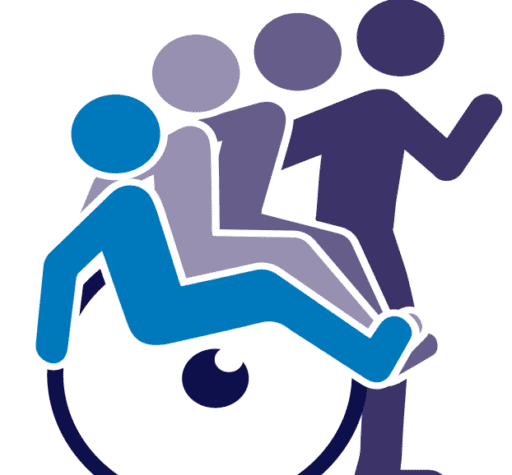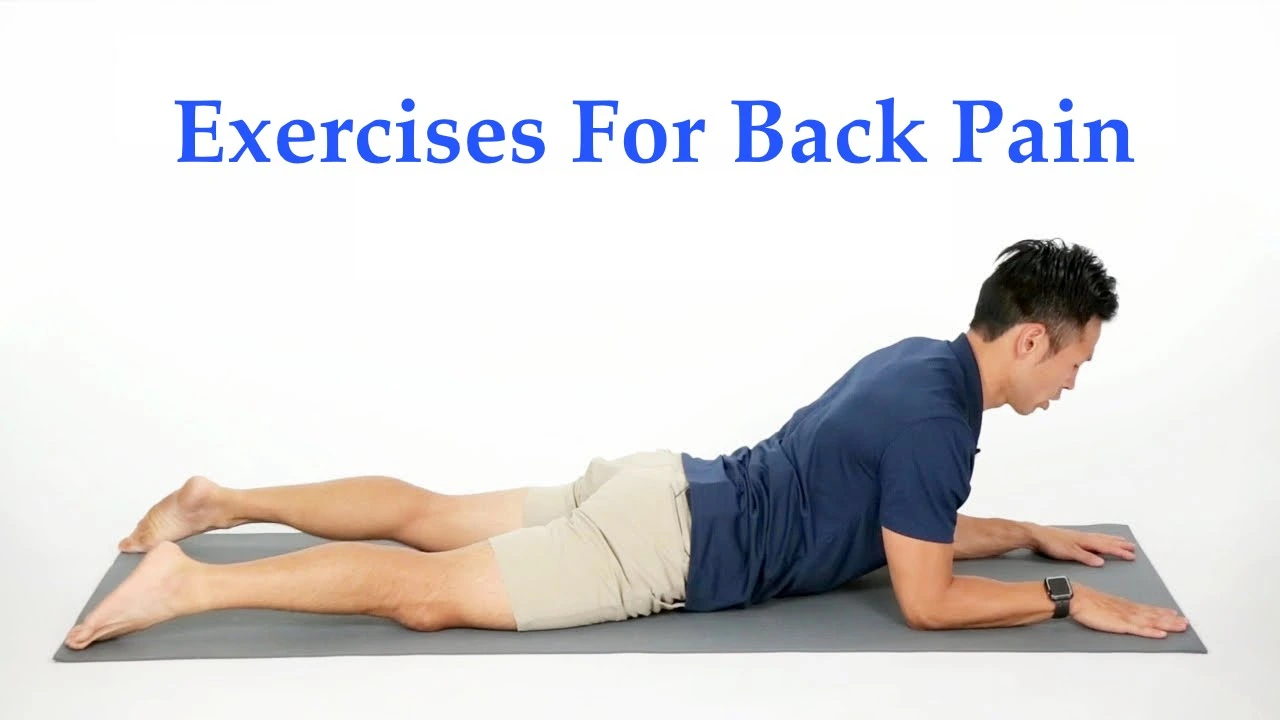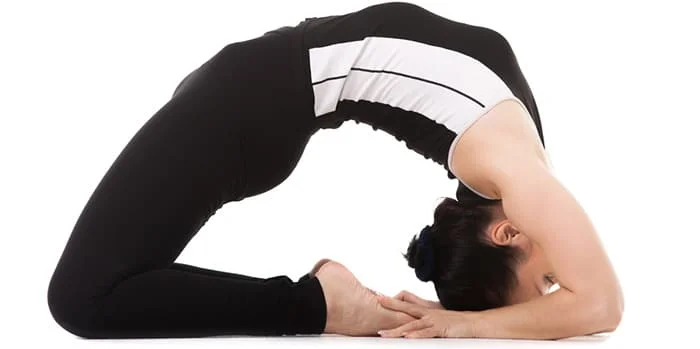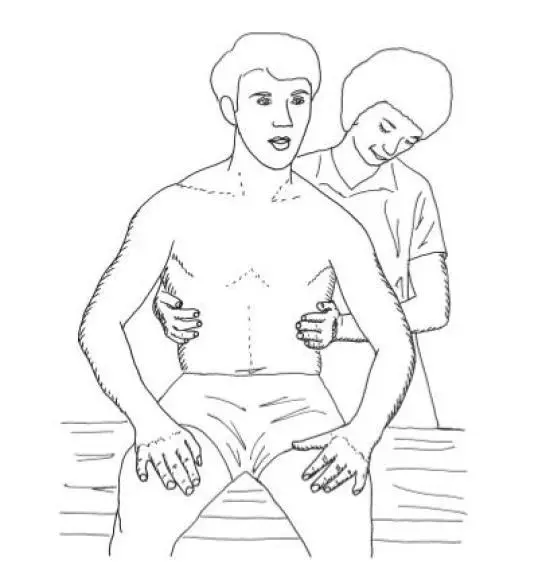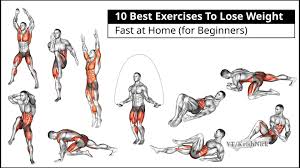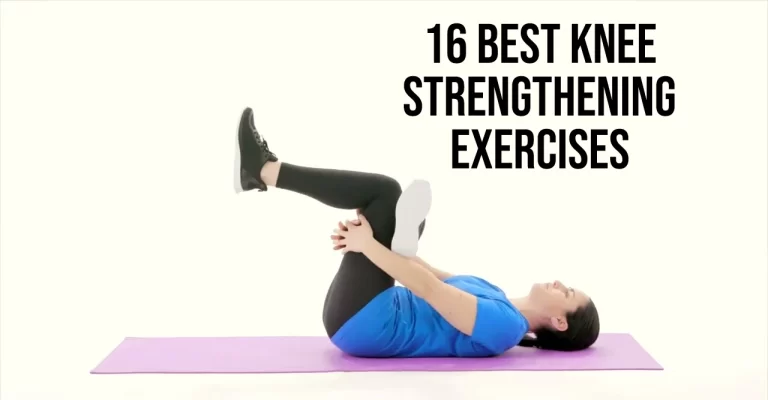10 Best Exercises for Back Pain
For back pain, the best exercises combine gentle stretching to improve flexibility (e.g., Cat-Cow, Knee-to-Chest, Pelvic Tilts, Spinal Twists) and core strengthening (e.g., Bridges, Bird-Dog, Planks, Superman) to support the spine.
Low-impact aerobic activities like walking or swimming are also beneficial. Always perform movements slowly, pain-free, and consult a healthcare professional for personalized guidance.
Table of Contents
How to Strengthen the Lower Back
- Several criteria determine the best course of action for treating your lower back pain.
- First, get medical guidance before trying to stretch yourself if your discomfort is related to trauma, such as a fall or an accident. The same is true if you experience back pain in conjunction with coughing, vomiting, or other symptoms.
- But if you’ve been sitting in a bad chair for a while or have overexerted yourself with housework or yard work, a little stretching and exercise can be just what you need.
Best Exercise For Back Pain
- Child Pose
- Knee to Chest Stretch
- Piriformis Stretch
- Cobra Pose
- Cat-Cow Stretch
- Low Lunges
- Bird Dog Exercise
- Superman Pose
- Partial Situps
- Side Plank
Child Pose:
- Place your hands and knees on the ground or a bed to begin.
- Maintain a wide stance with your knees while drawing your big toes together.
- You need to shift your hips such that your heels support your buttocks.
- Utilizing your hands and arms on the floor underneath, reach forward on either side of your head.
- Hold for 10 to 30 seconds.
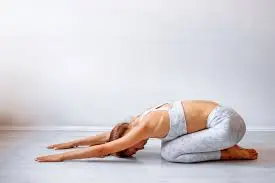
Knee to Chest Stretch:
- You should lie on the ground with your knees bent and your feet flat on the floor. As you squeeze your core muscles, lower your spine to the ground
- Hold for five seconds.
- Proceed to the second leg after completing the first.
- Return to your starting position. Next, do it simultaneously with both legs.
- Twice or three times, repeat each stretch.
- Complete the full program once in the morning and once in the evening.
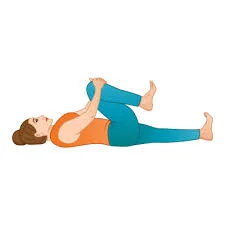
Piriformis Stretch:
- This stretch is really effective for your hips and glutes, although it could be challenging if your pain is too bad.
- With your buttocks gently lowered to the floor, form a figure-four with one leg on top of the other thigh.
- Hold for 20 seconds.
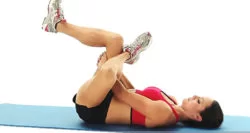
Cobra Pose:
- Start by extending and raising your lower back slightly while lying down.
- perform three sets of this workout ten times.
- This stretch can be modified by reclining on your forearms if it seems too strenuous.
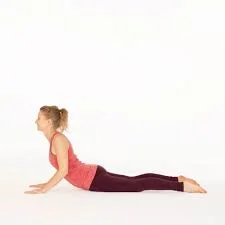
Cat-Cow Stretch:
- As you practice the cat-cow yoga pose, your spine will become more flexible. This task starts on a surface and is typically performed on your hands and knees.
- Position both hands evenly on a counter, desk, or tabletop while keeping your elbows straight.
- Place your palms together and lower them to your chest (cat) while gently twisting your back.
- Tilt your head forward (cow), descend your upper body, and bring your shoulders together.
- Perform the cow and the cat three or five times with gentle care.
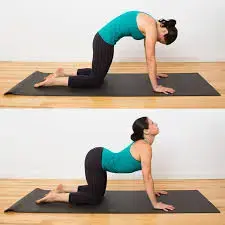
Low Lunges:
- Your right foot should be between your palms as you begin in the downward-facing dog position. The left knee should be lowered and placed on the mat. The left hip and thigh should feel stretched as you slide the foot back.
- With the hands on the right thigh, drop the hips until they are level with one another.
- After you’re balanced, take a breath and raise your hands to your ears. Maintain a straight abdomen while lifting the chest off the thigh.
- Now, elevate the head and slightly arch the back while maintaining eye contact with the thumbs or fingertips.
- Keep your spine neutral and your eyes forward if you don’t feel comfortable arching your back.
- Take a few breaths or a minute to maintain that ideal position.
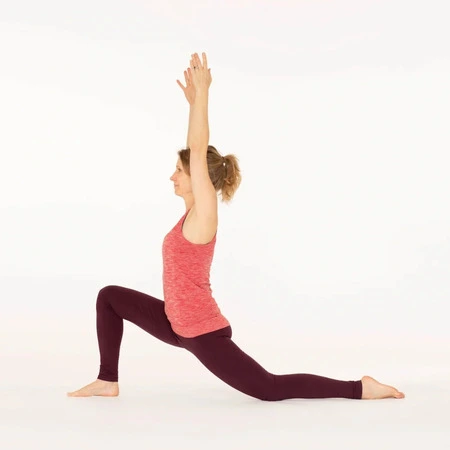
Bird Dog Exercise:
- Assume a hands-and-knees position, placing your knees directly under your hips and your hands slightly behind your shoulders
- Maintaining your head and spine in alignment, raise your right arm forward and your left leg straight behind you until both are parallel to the floor.
- Pause, then go back to your starting point.
- Maintain a flat back, level hips, and firm abdominal muscles throughout the workout.
- Ten times on each side, repeat.
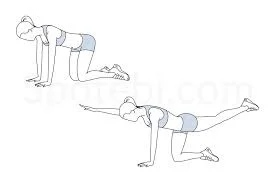
Superman Pose:
- Lie flat on your stomach on a mat or cushioned surface.
- Lower your hands and extend your arms ahead of you.
- Keep your legs close together and extended in front of you.
- Inhale deeply and exhale as you raise your arms, chest, and legs off the floor at the same time.
- Activate your glutes, lower back, and core to stabilize the pose.
- Your body should arch slightly, supporting itself on your pelvis.
- Maintain this pose for 3 to 10 seconds (or longer to increase stamina).
- Maintain your eyes downward to keep your neck in a neutral position.
- Perform 8 to 12 repetitions, or include it as part of your back or core training routine.
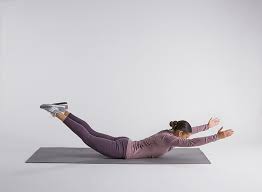
Partial Situps:
- Lay on your back on a mat or other cushioned surface.
- You can either cross your arms over your chest or lightly place your fingertips behind your ears (avoid pulling on your neck).
- To engage your abdominal muscles, pull your belly button toward your spine.
- As you exhale, lift your head, neck, and shoulder blades slightly off the mat—just a few inches.
- Ensure that your lower back stays firmly grounded.
- Pause at the top for 1–2 seconds.
- Inhale as you gently lower yourself back down.
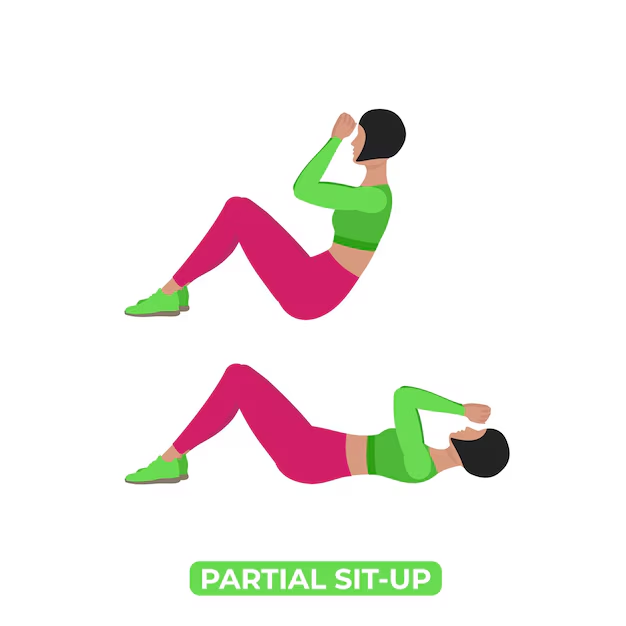
Side Plank:
- On either side of a mat, position yourself.
- To keep your feet flexible, place one leg on top of the other.
- Position your lower elbow directly beneath your shoulder, with your forearm flat on the mat and at a right angle to your torso.
- Place a hand beside you on your hip or upper arm.
- Keep your neck aligned by looking straight ahead or slightly downward.
- Maintain this position for 15–30 seconds, or extend the duration as you build strength.
- Make sure your hips stay elevated and your body remains in a straight line without dropping at the waist.
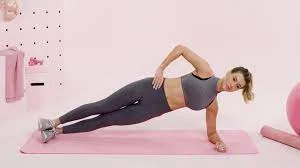
Best Exercises for Back Pain Video
Prevention
A physiotherapist will assist in identifying the underlying cause of the issue and create a customized regimen to guarantee the greatest results. The level of stiffness you experience does not necessarily correlate with your age, despite the fact that lower back pain is frequently related to the aging process. Because they get regular, committed treatment and exercise, many of the 50-year-olds who visit our clinic have better spines than those of the 20-year-olds.
As people age, their muscles get tighter, their cartilage shrinks, and the amount of fluid that lubricates their joints decreases. However, when it comes to back pain and stiffness, there may be others at work.
Inactivity: Another factor is inactivity; if you spend a lot of time sitting still, driving for hours, or sleeping, your muscles may get stiff. Try to stay active.
Posture: Our bodies contract when we are under stress, and this tightening can result in strained muscles and a rigid posture.
Lifting technique: Naturally, improper lifting technique is another significant contributor to lower back pain. Remember to brace, take a deep breath, and bend your knees if you are lifting something even somewhat heavy off the ground.
Summary
- A common issue that is often caused by stress, poor posture, or inactivity is back pain. While severe or trauma-related cases should be evaluated by a medical professional, mild to moderate pain caused by prolonged sitting or physical overuse can usually be alleviated with proper exercises and stretches.
- Essential back-supporting muscles are targeted and strengthened by poses including Child Pose, Cobra Pose, and Pelvic Bridging. The article provides clear instructions to perform each exercise safely. Core-stabilizing moves such as Bird Dog and Superman Pose further support spine alignment and durability.
- Staying active, reducing stress, and practicing correct form are crucial for long-term back health. Notably, age is less influential than lifestyle when it comes to spinal wellness — consistent care and movement can often lead to stronger, healthier backs at any age.
FAQ’s
Lower back pain can be relieved with yoga postures and exercises, including bridge poses, bird dogs, knee-to-chest stretches, and partial crunches.
Using heat on your muscles can aid in their relaxation. Depending on the degree of your lower back pain, you can attempt heat or cold treatment for 20 minutes at a time, several times each day, until the pain subsides.
Every stretch should be maintained for 30 seconds or for as long as it feels comfortable. Stretching your hamstrings and relieving lower back tension may be achieved by bending forward to touch your toes.
Cold and hot therapies. Instead of using heat to treat a back injury, cold compresses or an ice pack are advised because they can prevent or reduce swelling and pain by numbing the injured region.
Time spent in bed is limited.
Taking part in physical activity.
alternative medicine.
References:
- Gaikwad, T., & Gaikwad, T. (2024, March 29). 11 top exercises for lower back pain. KCM Clinic – Klinika Leczenia Otyłości, Poradnia Medyczna, Szpital – Jelenia Góra, Wrocław. https://kcmclinic.com/11-top-exercises-for-lower-back-pain/
- Back exercises in 15 minutes a day. (n.d.). Mayo Clinic. https://www.mayoclinic.org/healthy-lifestyle/adult-health/in-depth/back-pain/art-20546859
- Physio, B. (2025, March 12). 13 exercises for lower back pain that you can do anywhere. Benchmark Physio. https://benchmarkphysio.com.au/physiotherapy-exercises-for-lower-back-pain/
